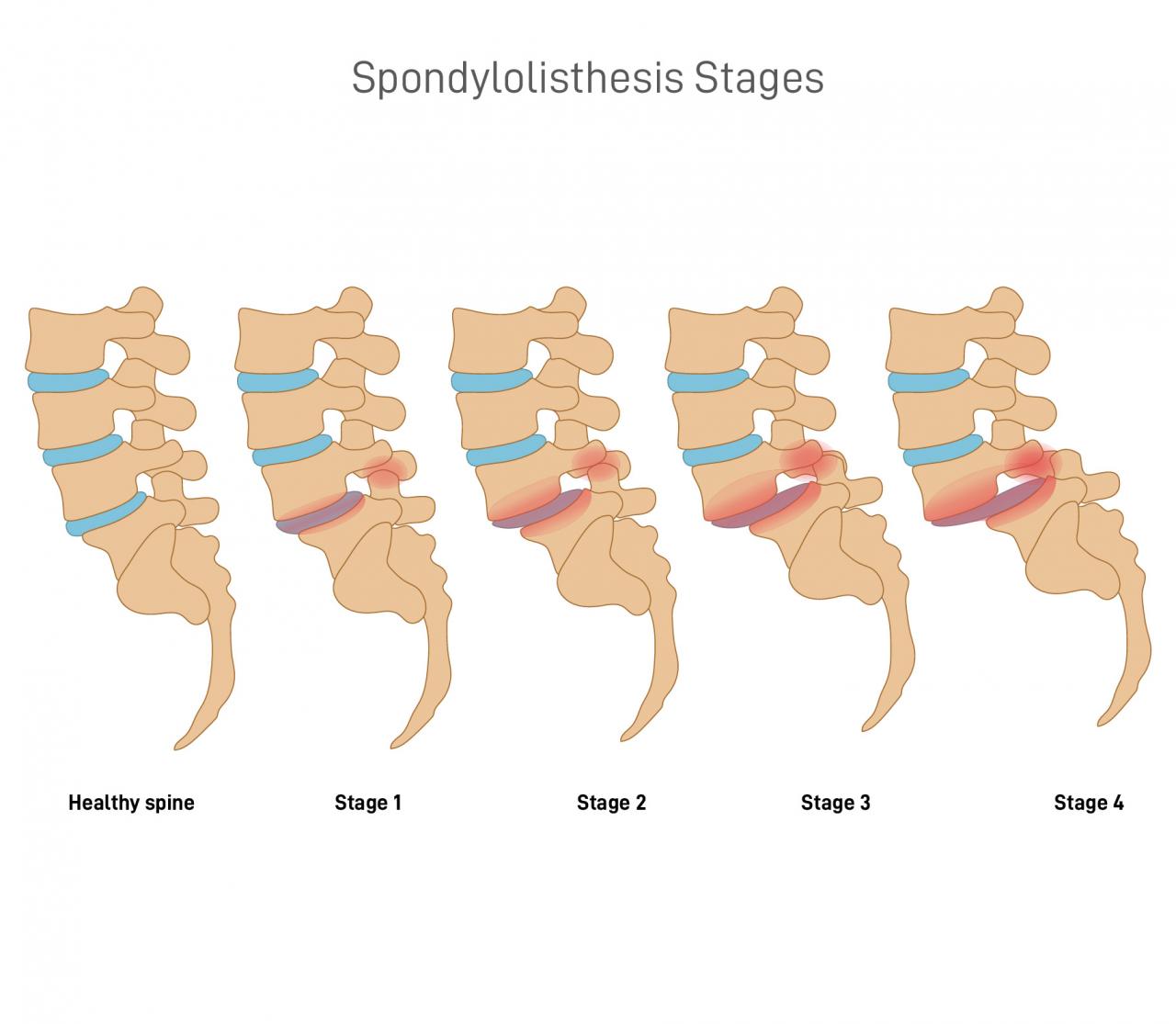
Spondylolisthesis is a condition characterized by the slipping or dislocation of a vertebra over the one below it. This can occur in various regions of the spine but is most common in the lumbar spine (lower back). While spondylolisthesis is generally not considered dangerous or severe, it can lead to symptoms when associated with nerve compression, disc degeneration, or osteoarthritis.
This condition is particularly prevalent in the lumbar region. Lumbar spondylolisthesis occurs when a vertebra in the lower spine shifts out of its normal position onto the bone beneath it. This displacement can be due to a variety of reasons, including weakness, stress fractures, or degenerative changes, making it common in both young athletes and older adults affected by arthritis. For comprehensive information on this, you can refer to UTH Medicine.
Many patients with spondylolisthesis experience minimal to no symptoms. However, the condition becomes concerning when individuals develop symptoms due to the sliding bone pressing on the spinal cord or nerves. This pressure can cause pain, weakness, and other symptoms affecting quality of life. A detailed overview of the condition and its implications can be found at Hospital for Special Surgery.
Spondylolisthesis can develop gradually over time, typically due to overuse and is not a sudden occurrence. The condition may involve a stress fracture (pars defect) and subsequent slippage of the bones of the lower spine. These fractures can occur on one or both sides of the vertebrae. Insightful resources on the development and nature of these fractures are available at Columbia Neurosurgery.
The term spondylolisthesis is derived from the Greek words “spondylos,” meaning vertebrae, and “olisthesis,” meaning slipping. It’s a common cause of back and leg pain in adolescents and adults alike. Those seeking to delve deeper into the etymology and impact of spondylolisthesis can visit Ohio State Wexner Medical Center.
Various treatments are available to manage and alleviate the symptoms of spondylolisthesis, ensuring an improvement in the lives of affected individuals through research, education, and patient care. For further information on available treatments and managing the condition, the OHSU Spine Center offers extensive resources.
In conclusion, while spondylolisthesis is not usually a severe condition, it’s essential for those experiencing symptoms to seek medical advice and explore treatment options. This will help in managing symptoms effectively and improving the quality of life for patients dealing with this spinal condition.


